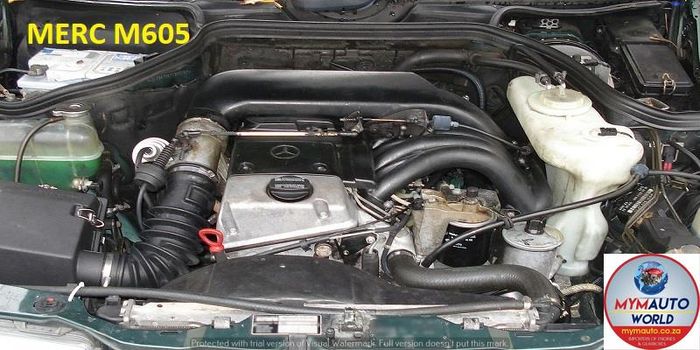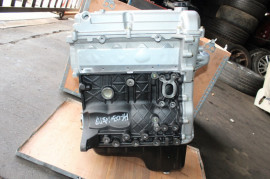Improve Your Ride with a High-Quality Opel Corsa Engine
Improve Your Ride with a High-Quality Opel Corsa Engine
Blog Article
Discovering the Inner Workings of a Compact Automobile's Engine System
As motorists, we frequently take for approved the detailed processes that occur within the confines of our vehicle's engine system. In this expedition of a small automobile's engine system, we will decipher the inner workings of this mechanical symphony, dropping light on the enigmas that drive us onward on our everyday trips.
Burning Refine Introduction
The combustion procedure in a portable vehicle's engine system is a critical system that successfully converts gas right into energy to power the automobile. This process happens within the combustion chamber of the engine, where fuel and air mix, spark, and generate regulated explosions. The combustion procedure contains 4 main phases: consumption, power, compression, and exhaust.
Throughout the intake phase, the piston relocates downward, attracting a blend of air and gas into the burning chamber. The next phase, compression, entails the piston moving up, pressing the air-fuel mixture to increase its potency. Consequently, in the power phase, the ignition system fires up the pressed mixture, causing a quick development of gases that compels the piston pull back. This down movement produces the power required to drive the vehicle. In the exhaust stage, the burned gases are gotten rid of from the burning chamber through the exhaust shutoff, preparing the chamber for the next cycle. This cyclic combustion procedure is fundamental to the operation of a compact car's engine system, making certain efficient energy conversion for propulsion.
Piston and Cylinder Interaction

The piston's precise fit within the cylinder is essential for maintaining ideal compression and preventing energy loss during combustion. Limited clearances between the piston and cyndrical tube wall surfaces guarantee efficient securing, allowing the piston to relocate efficiently without permitting gases to leak past. Proper lubrication is additionally vital to lower rubbing and use between these elements, boosting durability and performance.
Moreover, the layout and products made use of in manufacturing the piston and cyndrical tube effect engine efficiency and sturdiness. Modern engines usually employ lightweight yet long lasting products like aluminum alloys for pistons and cyndrical tube liners to decrease inertia and boost thermal effectiveness. In general, the unified interaction between the piston and cylinder is basic to the engine's functionality and general efficiency.
Fuel Injection System Functionality
Gas injection systems in portable car engines play a critical duty in precisely providing fuel to the combustion chamber for efficient and regulated ignition. The fuel shot system operates by infusing gas right into the combustion chamber at the optimum moment during the engine's procedure (opel corsa engine). This specific timing ensures that the fuel mixes equally with the air for proper burning, bring about enhanced gas performance and decreased discharges
There are largely two kinds of about his gas shot systems made use of in portable car engines: port fuel injection (PFI) and direct fuel injection (DFI) PFI systems infuse fuel into the consumption port prior to the intake shutoff, while DFI systems inject fuel directly into the combustion chamber. Both systems have their advantages, with DFI providing much better fuel atomization and PFI offering a more affordable solution.
Recognizing Engine Cooling Systems
Effective operation of a small car's engine counts heavily on the performance of its cooling mechanisms. Engine air conditioning is vital to avoid getting too hot, which can lead to significant damages and decreased efficiency. The cooling system in a portable car normally contains a number of components functioning with each other to control the engine temperature level. One important part is the radiator, which makes use of coolant to soak up warm from the engine. As the warm coolant flows through the radiator, it launches warm into the air, cooling prior to returning to the engine. The water pump circulates the coolant via the engine and radiator, making certain a regular flow to manage temperature level. In addition, the thermostat helps manage the coolant flow to keep ideal engine temperature level. Some vehicles likewise have cooling fans that trigger when extra air conditioning is needed, such as throughout heavy website traffic or warm weather condition. Comprehending these engine air conditioning systems is crucial for maintaining the efficiency and long life of a compact automobile's engine system.

Exhaust System Components Explained
The optimum performance of a compact automobile's engine cooling mechanisms relies on a corresponding system called the exhaust system, which makes up various important elements for guaranteeing efficient discharges and engine efficiency. The exhaust system consists of elements such as the exhaust manifold, catalytic converter, muffler, and tailpipe. The exhaust manifold gathers exhaust gases from the engine's cylinders and paths them to the catalytic converter. Get More Information The catalytic converter after that converts hazardous toxins in the exhaust right into less unsafe emissions before releasing them through the muffler and tailpipe.
One important component of the exhaust system is the oxygen sensor, which monitors the oxygen degrees in the exhaust gases to aid manage fuel usage and make sure optimal engine efficiency. opel corsa engine. Additionally, the resonator might exist in some exhaust systems to reduce noise levels. Generally, the exhaust system plays an important duty in preserving engine performance, reducing harmful discharges, and ensuring a quieter driving experience for portable automobile owners

Final Thought
To conclude, the portable lorry's engine system is a complex combination of parts that interact to assist in the burning process, transform gas right into energy, and get rid of waste gases. Recognizing the internal operations of the engine system, consisting of the piston and cyndrical tube communication, fuel shot system, Get More Information engine air conditioning systems, and exhaust system components, is vital for maintaining optimum efficiency and efficiency of the car.
The combustion procedure in a compact automobile's engine system is a vital device that efficiently converts gas into energy to power the lorry.Fuel shot systems in compact vehicle engines play an essential function in precisely providing gas to the combustion chamber for regulated and reliable ignition.There are mainly 2 types of gas injection systems made use of in compact vehicle engines: port gas shot (PFI) and direct gas injection (DFI) Understanding these engine cooling mechanisms is vital for preserving the efficiency and longevity of a portable car's engine system.
The optimal functioning of a small car's engine cooling devices depends on a corresponding system known as the exhaust system, which makes up numerous important components for making certain efficient discharges and engine efficiency.
Report this page